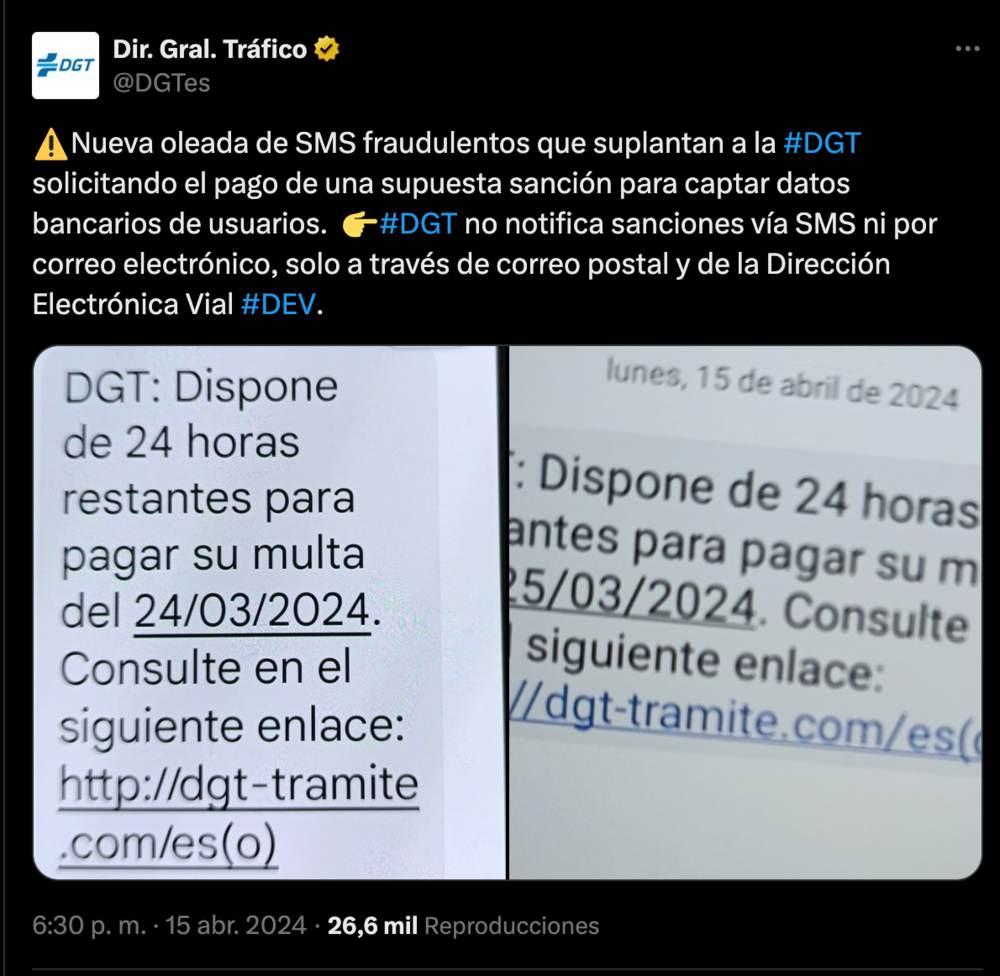Scam attempts continue to be a major problem for all users. Recently, the DGT has confirmed that it has detected a fraud attempt that would be impersonating the organization’s identity and affecting all drivers in our country, simulating a notification of a fine so that we can proceed to pay it. We tell you all the details.
The identity fraud has become one of the preferred options for all types of cybercriminal groups who seek to steal our money or our personal data to, in the end, obtain an economic return with them. The DGT has been one of the last organizations in alert of this situation. Through your X accountformer Twitter, has published a series of messages that drivers in our country are receiving and that, posing as the organization, inform them of a financial penalty that they must pay as soon as possible.

24 hours to pay a fine
The group of cybercriminals behind this scam uses classic SMS to contact their victim. As we can see in the previously attached screenshot, the message says something like “DGT: You have 24 hours remaining to pay your fine. Please refer to the following link”. The scam occurs when we click on the link that probably takes us to some fraudulent website with a fictitious payment gateway in which, when entering our card information, it will steal our money, since it will have all of our information. card available until we block it.
The criminals try to put a time limit of some hours to pay the fine to avoid giving us time to think about whether we have received any prior notification or not. However, in these types of cases the best we can do is remain calm, in order to avoid taking false steps.
It is not an official notification
The DGT Remember that the agency never notifies any type of sanction through text messages or email. All notifications are carried out through postal mail and the Electronic Address. So if we receive any notification through any other means, it will be a scam and we should never click on any link included in the communication.
If we receive a similar message, the first thing we have to do is contact the relevant authorities to report the case. Next, we must proceed to delete the message and, finally, block the number from which the message has reached us. In this way, we will prevent them from contacting us again.
If, on the other hand, we have clicked on the link, it is important that we act quickly. In the event that we have not entered any of our personal data, we must exit the page in question as soon as possible and check that none of our bank accounts have been affected. On the contrary, if we have entered the bank details, we must proceed to block our card and speak with our bank to inform them of the situation so that they can take the appropriate measures.













